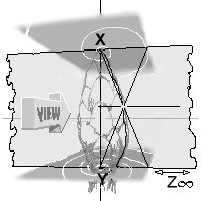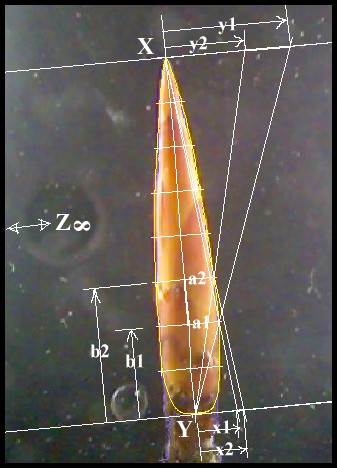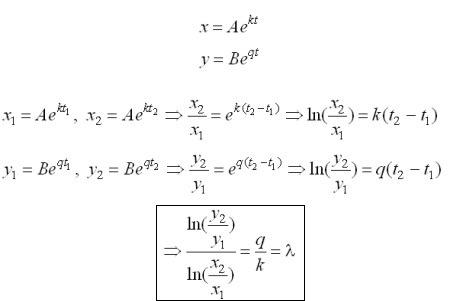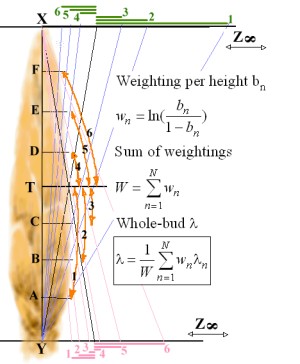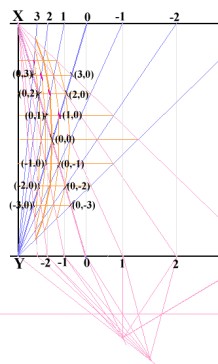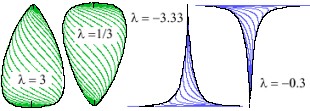|
In other words, a
path curve is
a straight line in its own frame of reference - which is,
for buds and eggs, the semi-imaginary
invariant tetrahedron. (The invariant triangle in which
we set the real bud is an "axial section" through this tetrahedron.)
- The slope of this line is
our 'shape factor', λ.
- The intercept, c,
is an indication of the "disposition" of the bud in its own space, and
a measure of its size in "ordinary" space.
The elliptical, orange
path curves shown above have a slope (that is, λ)
of +1.0. The bold curve passes
through the origin. The straight, horizontal, orange lines are
path curves with a slope, or λ
, of -1.0. In their own
"bud space", these sets of path curves lie at right angles to each other.
So the business of finding the path
curve best matching a real bud reduces to finding a straight
line of best fit, and the well-known, well-worn, statistical technique
called linear regression is
ideally suited to the task. Hence the name given to the method.
|
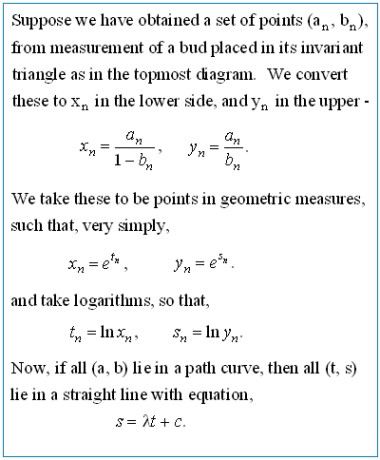 |
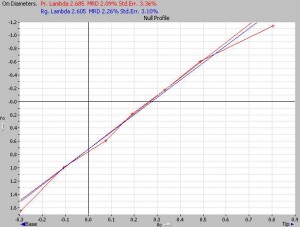 |
On the left is the graph in "bud space", on seven diameters, for the beech bud shown above. The red line is the straight-line fit by the projective method. The blue line is the fit by the regression method. The bud shows a reasonable fit over its profile, except at the topmost and bottommost heights. Such mismatches often indicate that
- The poles are poorly placed, or
- The bud is perhaps opening, or
- There are too few measurements.
|
